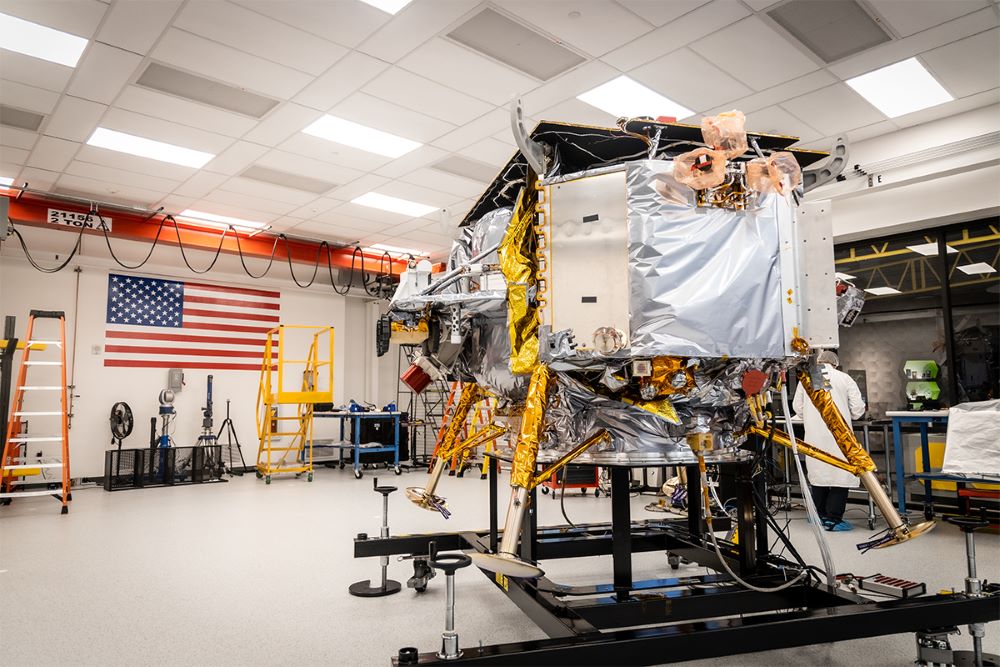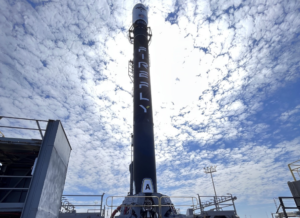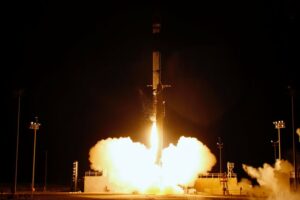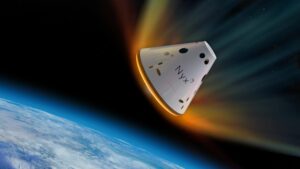
NEW ORLEANS — Astrobotic said its Peregrine spacecraft suffered an unspecified anomaly hours after launch Jan. 8, putting its plans to land on the moon in jeopardy.
In a statement about seven hours after launch on United Launch Alliance’s first Vulcan Centaur, Astrobotic said that the spacecraft had entered a “safe, operational state” shortly after deployment from the Centaur upper stage. That included communicating with NASA’s Deep Space Network and activating its propulsion system.
“Unfortunately, an anomaly then occurred, which prevented Astrobotic from achieving a stable sun-pointing orientation,” the company stated. “The team is responding in real time as the situation unfolds and will be providing updates as more data is obtained and analyzed.”
Astrobotic did not immediately provided additional details about the anomaly. Failure to maintain a sun-pointing orientation could deprive the spacecraft of the ability to generate power using is solar panels.
“The first thing that we’re going to do is rotate the spacecraft to make sure that it’s pointed at the sun, and then we’re going to charge the batteries, make sure everything’s correct,” John Thornton, chief executive of Astrobotic, said in a Jan. 5 interview about post-launch Peregrine activities.
The company had reported no problems immediately after launch. “Peregrine powered on, acquired a signal with Earth and is now moving through space on its way to the moon,” Thornton said in a statement after the launch.
Vulcan Centaur placed Peregrine into a highly elliptical orbit that takes the spacecraft out to the vicinity of the moon. Astrobotic planned to conduct several trajectory correction maneuvers to refine the orbit ahead of going into orbit around the moon. Peregrine is scheduled to land on Feb. 23.
The landing, Thornton said in the pre-launch interview, was the biggest risk for the mission. “We know we’re headed into a gauntlet here. We know we’re headed into very difficult territory,” he said. “At the end of the day, we need to get as much data as we can at every point through the mission so we can learn and get better as an industry.”
- SEO Powered Content & PR Distribution. Get Amplified Today.
- PlatoData.Network Vertical Generative Ai. Empower Yourself. Access Here.
- PlatoAiStream. Web3 Intelligence. Knowledge Amplified. Access Here.
- PlatoESG. Carbon, CleanTech, Energy, Environment, Solar, Waste Management. Access Here.
- PlatoHealth. Biotech and Clinical Trials Intelligence. Access Here.
- Source: https://spacenews.com/peregrine-lander-suffers-anomaly-after-launch/
- :is
- :not
- 23
- 8
- a
- ability
- About
- achieving
- acquired
- activating
- activities
- Additional
- After
- ahead
- an
- analyzed
- and
- around
- AS
- At
- batteries
- BE
- Better
- Biggest
- CAN
- charge
- chief
- Chief Executive
- communicating
- company
- Conduct
- correct
- could
- data
- day
- deep
- deployment
- details
- DID
- difficult
- do
- earth
- end
- entered
- Every
- executive
- Failure
- Feb
- First
- For
- from
- Gauntlet
- generate
- get
- going
- had
- he
- headed
- here
- highly
- HOURS
- HTTPS
- immediately
- in
- included
- industry
- Interview
- into
- ITS
- Jan
- John
- jpg
- Know
- Land
- landing
- launch
- LEARN
- maintain
- make
- Mission
- Moon
- more
- moving
- much
- Need
- network
- no
- now
- obtained
- occurred
- of
- on
- operational
- Orbit
- orleans
- out
- panels
- placed
- planned
- plans
- plato
- Plato Data Intelligence
- PlatoData
- Point
- post-launch
- power
- powered
- prevented
- problems
- propulsion
- provided
- providing
- Putting
- real
- real-time
- refine
- Reported
- responding
- Risk
- Said
- scheduled
- seven
- several
- Shortly
- Signal
- situation
- So
- solar
- solar panels
- Space
- spacecraft
- stable
- Stage
- stated
- Statement
- Suffers
- Sun
- sure
- system
- takes
- team
- territory
- that
- The
- then
- thing
- Through
- time
- to
- trajectory
- United
- Updates
- using
- very
- vulcan
- was
- Way..
- we
- which
- will
- with
- zephyrnet








